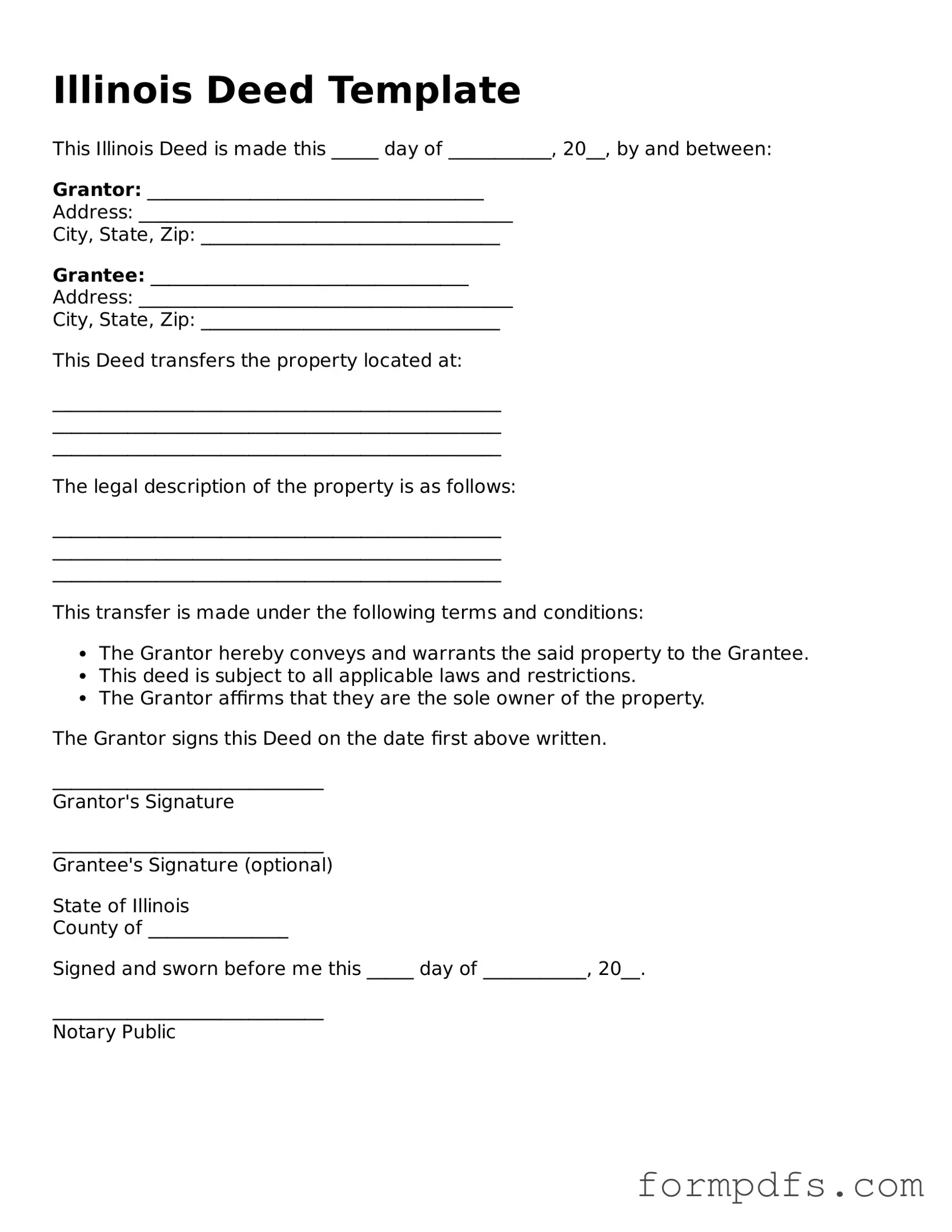What is an Illinois Deed form?
An Illinois Deed form is a legal document used to transfer ownership of real property from one party to another in the state of Illinois. This form outlines the details of the property being transferred, including its legal description, the names of the grantor (seller) and grantee (buyer), and any conditions or restrictions related to the transfer. It is essential for ensuring that the transfer is legally recognized and recorded with the appropriate county office.
What types of Deeds are available in Illinois?
Illinois offers several types of Deeds, each serving different purposes. The most common include the Warranty Deed, which guarantees that the grantor has clear title to the property; the Quitclaim Deed, which transfers whatever interest the grantor has without warranties; and the Special Warranty Deed, which provides limited warranties only for the time the grantor owned the property. Choosing the right type of Deed depends on the circumstances of the transfer and the level of protection desired by the grantee.
How do I complete an Illinois Deed form?
To complete an Illinois Deed form, start by filling in the names and addresses of both the grantor and grantee. Next, provide a complete legal description of the property, which can usually be found on the property’s tax bill or deed. After that, specify the consideration, or payment, involved in the transfer. Finally, both parties must sign the form in front of a notary public. Once completed, the Deed must be recorded with the county recorder’s office to be effective against third parties.
Are there any fees associated with filing an Illinois Deed?
Yes, there are typically fees associated with filing an Illinois Deed. These fees can vary by county, so it’s important to check with the local recorder’s office for specific amounts. Additionally, there may be transfer taxes that apply based on the value of the property being transferred. It’s advisable to budget for these costs when planning a property transfer to avoid any surprises.
